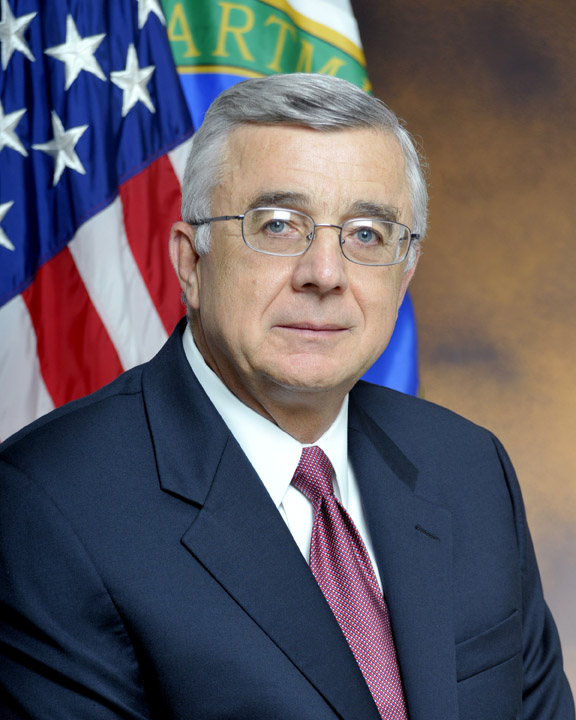EYE ON ALUMNI
James Markowsky, B.M.E. ’67
 When James Markowsky, (B.M.E. ’67), former assistant secretary in the U.S. Department of Energy, decided to study engineering at Pratt, he did not know much about the field.
When James Markowsky, (B.M.E. ’67), former assistant secretary in the U.S. Department of Energy, decided to study engineering at Pratt, he did not know much about the field.
“I was interested in mechanical things, building things. I used to build my own go-carts,” says the Speonk, Long Island native.
Markowsky decided to study mechanical engineering, knowing that it involved mechanical devices and how they operate, but not realizing that mechanical engineering also includes the generation of electricity and other forms of energy conversion.
However, once enrolled in mechanical engineering courses, he was hooked.
“My thermodynamics professor inspired me, and I became interested in power cycles,” Markowsky says. Little did he imagine this inspiration in a Pratt classroom would eventually lead him to be one of the top-ranking energy officials in the country.
This same professor also arranged for Markowsky to do a summer internship at American Electric Power (AEP).
“He made me aware of AEP’s summer intern program called Project Probe which put students in power plants running performance tests and getting to know how power plants and power cycles work,” he says. This summer internship led to a 30-year career with AEP.
Markowsky also found time for fun while at Pratt, playing on the Institute’s baseball team and joining the Tau Delta Phi fraternity.
“Pratt had a great campus, and the professors were great. A lot of the students were commuters and they were neat people—city people. I had a great experience there,” Markowsky recalls.
After graduation, Markowsky studied aerospace engineering at Cornell University with grants from NASA, which led to an interest in the space program. However, with the space program undergoing major upheavals in the late 1960’s, Markowsky instead accepted a job offer from AEP in 1971.
Over his three decades at AEP, which relocated from New York City to Columbus, Ohio, in the 1980s, Markowsky held several positions. At the time he retired he was serving as executive vice president for power generation.
“AEP was one of the few companies that would design, build, and operate our own power plants. As I moved up the line, I had coal mines, rail fleets, barges, and the engineering and construction organizations that built power plants—as well as the operators of the plants themselves—reporting to me.”
In 2007 Markowsky joined a National Academy of Engineering committee charged with studying the country’s energy future. He was selected to head the subgroup on electrical transmission and distribution.
“My expertise was actually the opposite—I focused on power generation, but I took on heading the subcommittee and that was where I met Steve,” he says, referring to Steven Chu, tapped in 2009 to be President Barack Obama’s Secretary of Energy.
Early in 2009, Markowsky received a call from Chu, asking him to submit his name for consideration for an assistant secretary position with the Department of Energy. After two conversations, Markowsky agreed to submit his name as the presidential appointee for assistant secretary for fossil energy.
“I liked Secretary Chu and what he planned to do with the Department of Energy (DOE). He seemed to be setting up a strong team of people experienced in academia and industry, and his vision for DOE was great,” Markowsky says.
Markowsky was confirmed by the Senate in August 2009 and served as DOE’s assistant secretary for fossil energy through November 2010. In this role, he was charged with spending $4 billion of money directed toward clean coal programs from American Recovery and Reinvestment Act.
Markowsky’s work at the Department of Energy focused on carbon capture and storage technology, which removes carbon emissions from power plants and stores the carbon in places other than in the atmosphere. Developing this technology is considered by many to be an essential part of slowing the global climate change process. Markowsky lead the effort that set up 10 demonstration plants, to study how carbon could be removed and sequestered from coal-fired power plants in an economically viable way by the year 2020.
Markowsky says he left his DOE position to spend more time with his family, and was proud of the work he had done there.
“We had to obligate the $4 billion by the end of September so I got the programs in place and reorganized the lab and accomplished what needed to be done.”
He says throughout his highly successful career, Markowsky repeatedly drew on his Pratt education.
“The education I got in thermodynamics, the basis of all energy systems, was the basis for my work,” he says. “I gained the insight to ask questions to get to the heart of issues and Pratt helped me develop that by the exposure I got in those courses,” he says.
Photo: Courtesy of the Department of Energy

 Gateway Editors
Gateway Editors
Reader Comments